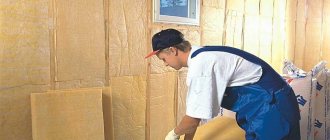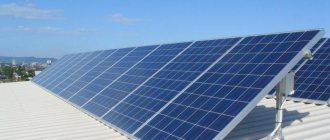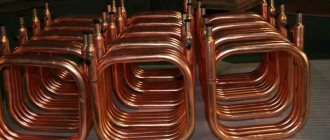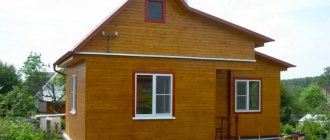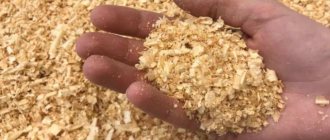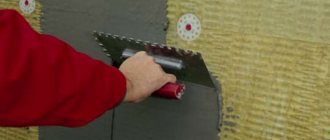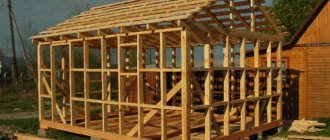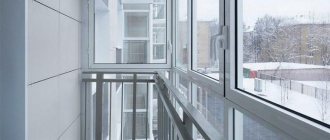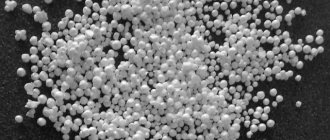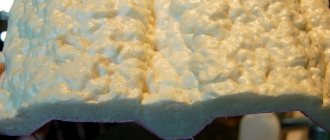Types of material for facade insulation
To choose the most suitable thermal insulation , you should consider the characteristics of building insulation materials . Modern technologies allow manufacturers to produce high-quality products at an affordable price.
Figure 2. Insulation technology.
Foam plastic and penoplex
The products are used for external and internal insulation. Thanks to their shape and different thicknesses - from 2 to 100 cm, foam panels are easy to install. The density of the material makes it possible to use it when installing wet facades. Polystyrene foam and penoplex have the following positive qualities:
- High thermal insulation performance is achieved thanks to the cellular structure. The panels do not retain heat and protect against the penetration of cold air. Heat transfer is significantly reduced.
- Soundproofing is improved.
- Wind protection prevents cold air from entering the house.
- If we compare polystyrene foam with cotton wool, it better withstands the influence of a humid environment, but with constant exposure it is prone to destruction.
- Installation work does not require additional protection for the master, unlike glass wool.
- The method of insulation with foam plastic material protects load-bearing walls from the influence of various environmental factors and various alkaline, saline and acidic compounds.
The main disadvantage of insulation with slabs is their susceptibility to fire and the release of toxins during combustion, which are hazardous to health.
Ecowool
The material is not flammable due to the salts included in the composition. Ecowool insulation allows the walls to breathe, since this material allows the right amount of air . An important point is styling. It is not recommended to compact the cotton wool tightly, since its looseness allows it to retain heat and at the same time allow moisture to pass through.
Glass wool
In terms of positive characteristics, fiberglass products occupy a place between stone and slag wool. Glass wool is produced by melting glass. For this reason, installation work of such elements is carried out only in protective clothing and accessories:
- respirator or mask;
- clothing should have long sleeves, and legs should also be protected with long trousers;
- gloves and safety glasses.
It is recommended to use only for insulation of industrial and non-residential buildings.
Basalt wool
Covering the house with basalt slabs will allow you to insulate all the walls of the building from the street side. Stone wool can withstand very high temperatures - up to 1000 degrees Celsius. The material has long elastic fibers and low thermal conductivity.
Extruded polystyrene foam
Instead of foam plastic with its disadvantages, a material has come that has undergone modern development and research. During manufacturing, it is completely melted and various chemical components are added. The result is a finely porous, homogeneous structure. Insulation with expanded polystyrene is only suitable for external use, as it has excellent vapor barrier properties. EPS is also actively used for insulating basement and foundation structures.
Extruded polystyrene foam products are able to resist fire, have high chemical stability and resistance to mechanical stress.
Mineral wool
There are three classifications of mineral wool that can be used for facade insulation. Construction units differ significantly from each other, as they have different qualities and features. The most common brands of mineral wool manufacturers include:
- "Ursa" - insulation is designed for thermal insulation of frame structures, external walls and frame sandwich blocks.
- “Isover” - depending on the brand, it is suitable for the method of arranging a ventilated facade and the wet facade insulation technique.
- "Knauf" - used for frame facades, ventilated systems and the wet method of thermal insulation.
Plaster
A layer of plaster is the most common thermal insulation system for facade walls. The main positive quality is that it contains safe and environmentally friendly components. The method is divided into light and heavy plastering work. When performing the latter type, movable fragments of fasteners for the heat-insulating layer and plaster are used. This option is produced with a division of work; there are no requirements for the rigidity and density of building materials. the façade surface for plaster .
Figure 3. Insulation of the facade with plaster.
Thermal panels
The elements serve as a barrier and protection for the home. Compared to other systems, thermal panels have many advantages:
- ease and speed of installation on the facade;
- it is possible to work with the material all year round;
- heating costs are reduced by 40-60%;
- can be mounted on an unprepared surface;
- does not require additional vapor barrier.
The design includes a layer of expanded polystyrene, equipped with special channels for removing condensate.
Both foreign and domestic builders are looking for new ways to maximize heat retention in a room and new technologies for insulating facades .
One of the basic systems for choosing a heating system can be called creating comfortable living conditions. Comfortable can be considered a combination of microclimate conditions that, with a long-term influence on the human body, guarantees the preservation of the normal functional state of the body. These parameters are determined by the difference between the air temperature in the room and the surface temperature of the walls directed into the room.
Today there are many facade thermal insulation systems. System manufacturers are constantly striving to invent something new. But when you forget about minor details, then this whole mass of systems can be divided into 3 types.
The first type is plaster facades. New technologies for facade insulation include light wet and heavy wet methods.
An easy insulation method is determined by rigid insulating boards laid on the walls. The slabs support the weight of the plaster and decorative coating.
The wet heavy method does not involve the use of gluing insulating boards to the wall. They are simply attached to anchor ties. In this case, the plaster is applied in a thick layer, and the entire weight is carried by a metal mesh. In European countries, this method is very popular, because factories provide a guarantee for tens of years on facades of this type.
New technologies for insulating facades using plaster use several types of thermal insulation boards. These can be extruded polystyrene foam, stone basalt wool and polystyrene foam. Extruded polystyrene foam is recognized as the most expensive, therefore it is used quite rarely and in specific places on the facade. It boasts high compressive strength and immunity to moisture and purulent processes. It is perfect for places where mechanical damage is likely.
Polystyrene foam is the cheapest material. It can be found in every city. The advantages include low thermal conductivity. However, it is caustic, toxic, susceptible to ultraviolet radiation and flammable. At the same time, it is worth saying that manufacturers are trying to improve its performance, making it more resistant to external influences and fire.
Stone wool is an excellent material, durable, cuts well, does not burn and allows water vapor to pass through. New technologies for insulating facades have only benefited from the beginning of the use of this type of material.
Ventilated facades are systems where the insulation always remains dry due to intensive ventilation. The installation system of the ventilated facade is mechanical, which can be described as a significant advantage, given the fact that installation can be carried out in any weather at any time of the year. Even the fastening elements are protected from corrosion, and the metal frame is made from galvanized or aluminum profiles.
There are many ventilated systems on the market due to the huge range of materials available.
Taking into account the fact that any of the previously existing heating methods had its own disadvantages, new technologies for facade insulation .
The use of external thermal insulation makes it possible to make significant changes to the structures of buildings, to make the load-bearing wall even thinner, that is, to save on the materials used in construction. In relation to the monolithic construction of houses, the thickness of the load-bearing wall can be 150 mm rather than 250 mm. This reduces the load on the foundation of the building, another foundation pit is needed, and reduces overall costs.
In the case of using a frame-monolithic scheme, the external wall can be made of concrete two hundred millimeters thick, which makes it possible to significantly increase the usable internal area. As practice has shown, external insulation of a facade can take up to ten percent of the entire project budget.
It is also worth considering the fact that façade systems are capable of providing long-term protection of building structures. The stability of the performance indicators of coatings without taking into account weather changes is perhaps the most important criterion for assessing their quality.
The wet method of insulating facades is currently quite well studied and quite common. A distinctive feature of wet shooting range façade systems is their stunning architectural capabilities. This method consists of attaching facade layers to the external wall, where special slabs serve as an insulating layer, and a number of thin layers of plaster with a backing mass serve as the facade layer.
When using fiberglass or mineral wool for insulation, it is necessary to remember that the joints between the external insulation system and other structural elements (doors, window sills, windows, roofs, etc.) must be sealed.
The fibrous insulation must be dry during installation of the system. Simply high humidity precludes carrying out work on insulating the façade without providing additional shelter (canopies, rain netting).
After completing the façade insulation work, you can step back and admire the work of your own hands. Of course, insulating the facade with your own hands will give you the opportunity to save on energy in the future. Everything will pay off, just wait a little.
Good luck to you, builders of your own warm past, present and, of course, future!
Everything you need to know about an extension to a house:
• Insulation of frame walls from the inside • Insulation of bathroom walls from the inside • Insulation of a house made of timber from the inside • Insulation of a private house from the inside • Insulation of walls from the inside of a frame house • Insulation of a log house from the inside • Insulation of a brick bathhouse from the inside • Insulation technology facades with polystyrene foam • Insulation of facades with polystyrene foam price • Insulation of facades with polystyrene foam video • Insulation of facades with polystyrene foam • Insulation of facades with polystyrene foam cost • Insulation of facades with polystyrene foam with your own hands • Technology of insulating facades with polystyrene foam video
| • Insulation of facades with foam plastic prices • Insulation of facades with foam plastic forum • Insulation of facades with foam plastic photo • Insulation of facades of wooden houses • Insulation of the facade of a country house • Insulation of facades of houses technology • Insulation of facades of residential buildings • Insulation of the facade of a private house • Insulation of facades of houses price • Insulation of facades of a panel house • Insulation of house facades video • Insulation of the facade of a brick house • Technology of insulation of building facades • New technologies for insulation of facades |
Features of insulation
The comfort of the premises depends on the insulated side of the thermal insulation , its type and thickness. Facade insulation systems for buildings create the most comfortable temperature conditions in the house and prevent the appearance of condensation.
Calculation of material thickness
To calculate the thickness of the insulating material, an insulating specialist first studies the characteristics of the building - the type of structure, the material of the load-bearing walls. After careful analysis, the most suitable thickness is selected.
What is the optimal insulation density?
to choose insulation of optimal thickness, taking into account the type of wall material and wall thickness. For example, for a frame house where the wall thickness is 15 cm, it is best to use basalt wool with a density of 50 kg/m3. New technologies allow you to save heat in your home at an affordable price.
Approximate prices for insulation per 1m2
The price for facade work depends on the material used and the region where the work is carried out. Russia is located in climatic zones where heating plays an important role.
Estimated costs of services:
- facade priming from 50 rub./m2;
- insulation of the facade and basement - excluding building materials from 400 rubles/m2;
- Turnkey facade insulation – from 2000 rubles per 1 m2.
Materials used for wet façade
For the first layer from the wall, you will need an adhesive mixture, which is used to attach the insulation. Most of the adhesive mixtures presented on the domestic market consist of a mineral base and polymer additives. This composition allows you to obtain inexpensive products with excellent vapor permeability and adhesion. An example of a high-quality adhesive mixture is the products of the QUICK-MIX company with excellent technical characteristics. Riemchen-Klebemortel adhesive is successfully used for gluing thermal insulation boards indoors and outdoors. Using glue, you can not only fix the insulation to the wall, but also somewhat level the load-bearing walls.
Expanded polystyrene or mineral wool slabs are used as insulation in wet facade systems. Mineral wool insulation has excellent thermal insulation properties and does not burn; basalt fiber slabs are especially good because they have excellent tensile strength, which makes them virtually invulnerable to wind loads. Durable insulation must also have good density - from 130 kg per cubic meter to 180 kg per cubic meter. This indicator is very important for performing a high-quality finishing layer of a wet facade, because if the insulation is too soft, delamination of the plaster layer can occur.
An important quality of insulation is its water absorption, which should not exceed 1-1.5% of the volume of the material. Excessive moisture in the insulation board leads to loss of geometric shape and warping, as a result of which gaps can form between the boards, which worsens the appearance and reduces the strength of the insulation.
Insulation made from expanded polystyrene is lighter than mineral wool; they have better thermal conductivity, which is especially important when creating a thinner façade. However, the flammability of polystyrene foam insulation requires treatment with special fire retardants or the use of fireproof mineral wool inserts.
The third layer of the wet facade is plaster with reinforcing mesh. It is used to increase the overall strength of the wet facade and ensure high adhesion of the decorative layering on the insulation. The components of the plaster are an adhesive mixture and a reinforcing mesh. The top of the mesh is covered with glue to level the surface. For these purposes, the same glue that was used to glue the insulation to the walls is sometimes used. The plaster-adhesive mixture contains mineral binders diluted with polymer additives. Despite the small amount of additives - only 2-4% of the volume of the plaster mixture, they give the plaster strength, water resistance, frost resistance and plasticity. The reinforced fiberglass mesh is impregnated in the factory with a composition that is resistant to alkalis, otherwise it will dissolve in the adhesive layer.
The finishing layer is a decorative coating, which also performs a protective function, protecting the insulation from the effects of precipitation, wind, frost, and ultraviolet rays. In addition, the aesthetic appearance of the insulated facade improves. This layer is most often made of decorative facade plaster, sometimes it is replaced with clinker ceramic tiles. Mineral plaster has increased vapor permeability for the free evaporation of moisture from the insulation; it must be painted with water-dispersion facade paint. But polymer plasters are tinted during the manufacturing process (mixing), so they are not subsequently painted.
Facade insulation options
Different methods of finishing coatings allow you to achieve certain features. wet facade type creates a monolithic coating without gaps, and the ventilated facade creates external insulation with ventilation gaps. Thermal insulation is attached to the walls using anchor elements and load-bearing frame structures. The technique allows vapors emanating from the premises in cold weather to reach the insulating layer and evaporate outside. This helps to increase the level of humidity on the insulating surface. Equipped ventilated gaps with the help of air flow reduce the formation of humidity to a minimum.
Wet facade
The multi-layer structure consists of a polymer adhesive composition, decorative finishing, insulation and a polymer-cement ball, which is finished with reinforced glass-mesh material. Installation of a wet facade is not carried out at temperatures below +5 degrees Celsius and in damp or rainy conditions. This method requires work to be performed with a high level of skill; the plaster must be applied in an even layer.
Figure 4. Wet façade technology.
Dry method
The dry insulation method involves the use of one of the methods - three-layer masonry or a ventilated facade. An air gap can be created between the insulation and the outer cladding. The cladding is mounted on the frame structure, thus covering the thermal insulation layer located inside. Using modern thermal insulation materials and facade insulation technology, an air gap is created that removes condensation.
Installation of double frame
Double ventilated frames are a hinged structure that is used to prevent the accumulation of condensation. Such facade elements include: thermal panel, polystyrene foam, expanded polystyrene, basalt wool. For frame insulation systems, a metal profile is used, and a substructure is constructed from it. The thermal insulation panel is protected from above by facing panels. between the profile . This option is suitable for both a brick facade and a wooden house .
Modern thermal insulation
For the first time, scientists began to closely study and develop effective heat insulators with the development of aviation, communications and refrigeration technology. In the construction industry, for a long time, expanded clay concrete and foam concrete remained the main protection against the cold. The first insulation material successfully used to insulate buildings, heating mains, refrigerators and airplanes was glass wool. Today, many other materials have appeared. Each has its own characteristic advantages that determine their scope of application.
Each heat-insulating material is produced in various modifications, adapted for a specific use.
Glass wool
This is a type of mineral insulation. Glass wool was made from sand, soda, dolomite, limestone and borax, and in modern production they mainly use recycled materials - cullet. Glass wool, which is still considered quite effective and has a wide range of applications, is used to make mats and slabs of varying hardness.
The disadvantage of glass wool is working with it. Thin, almost invisible fibers float in the air when laid and cause serious irritation if inhaled or in contact with the skin. Working with this insulation requires special training and the use of personal protective equipment.
Stone wool
This is a new generation of mineral insulation, which, together with the thermal insulation function, is an excellent sound insulator. Stone wool is made from a natural resource – gabbro-basalt rock. It is also called basalt insulation. The range of modifications is divided into roll insulation, plates and shaped (cylinders, segments, etc.). According to its intended purpose, it is used for insulation of enclosing structures, roofs, ceilings, pipes and boiler equipment.
Due to the resistance of basalt materials to high temperatures, it is also used as fire protection. Basalt insulation materials are often produced with additional additives.
Styrofoam
Foamed polystyrene is one of the most used materials due to its relatively low cost. Along with excellent thermal insulation properties, polystyrene foam has a number of disadvantages. Moreover, at first its use did not have a clear definition and regulations, which gave rise to a lot of rumors and contradictions. Indeed, at the beginning of the second half of the 20th century. Styrofoam was mainly used for packaging, so there was not much concern about health safety. Low-quality foam could easily ignite and release styrene and other toxins when heated.
Modern polystyrene insulation in the form of plates, regulated by GOST 15588-86, is absolutely safe. They are made from high-quality stabilized polystyrene with the addition of fire retardant, which makes the material self-extinguishing. At the same time, the foam is susceptible to aging under the influence of sunlight. In order for the thermal insulation to last for a long time, the foam layer must be covered with a facing element (plaster, primer, paint, etc.). Polystyrene-based boards are produced in various thicknesses, sizes and rigidities.
Food packaging containers that come into direct contact with the product are made from safe polystyrene foam. These products have permits and expert opinions from sanitary services.
Izolon
Izolon is foamed polyethylene, produced in the form of a roll material for sound and heat insulation. Foil-coated isolon is also produced to reflect infrared radiation. Its heat-insulating properties are several times superior to polystyrene foam.
Izolon is more often used for internal thermal insulation of walls, partitions, ceilings, laying it under facing materials - drywall, lining, block house, etc. Thermal insulating wallpaper is also made on its basis.
Polyurethane foam
Sprayed thermal insulation materials are, perhaps, the newest technologies for insulating house facades, which, in addition to being of high quality, are carried out in a short time. Polyurethane foam is obtained by mixing polyisocyanate and polyol.
The process takes place directly at the insulation site in special equipment during spraying. The foaming reaction occurs directly on the wall, forming a monolithic structure. The resulting layer prevents the penetration of heat, sound and moisture, is fireproof, resistant to natural aggressive influences, climatic cycles and fungal growth.
Warm paint
This direction was initially intended for space technologies, but eventually became available in construction. The secret is in the composition of the paint, or rather in its filler. These are microscopic spheres made of glass or ceramics, inside of which there is a rarefied space. The binder can be latex, acrylic, silicone or combinations thereof.
A layer of paint of just 1 mm creates thermal protection comparable to mineral insulation 2.5 cm thick.
Thermal panels
These materials are facing and thermal insulation at the same time. Their design and content may vary. For example, mineral slabs, polystyrene foam, cellulose, polyurethane foam can serve as a heat insulator, and decorative plaster, metal, metal-plastic, etc. can serve as the front layer. The design may include connecting grooves or other installation methods.
The greatest thermal insulation effect is achieved if the thermal conductivity of the insulating layer is 1.2 times lower than that of the wall. This allows not only to eliminate heat loss, but also to protect the wall from the destructive effects of climate cycles.
New solutions in home insulation
Modern options for external thermal insulation of facades allow finishing using mineral slabs, mineral wool, sandwich panels, and thermal insulating fiberboards. During operation, consumers appreciated the undeniable advantages:
- Protect walls from harmful external influences;
- Load-bearing walls are not overcooled, condensation does not form;
- Additional soundproofing effect;
- The walls “breathe” freely and at the same time retain heat;
- The service life of the building façade is extended.
The modern range of materials for facade insulation allows you to choose the best option based on the type of structure, taste preferences, as well as your financial capabilities.
Calculate the insulation of your home
There is one rule that is better not to break - insulation of the walls of the house should be done on the outside of the walls. Here another question arises: what insulation is better to use, and in what quantity, in order to achieve the maximum effect. The answers to the questions asked depend on the following criteria:
1.What are the climate parameters in this region.
2.What conditions apply to the microclimatic conditions inside the house.
3.What materials and with what density will be used when performing insulation.
In reality, the selection of insulation and its thickness must be determined based on the results of rather complex thermal calculations. Practice shows that it will be better if they are carried out by a specialist.
Many companies that deal with home insulation have such an employee on their staff. If all the work is entrusted to such a company, then the calculation of materials is included in the price. Those who decided to install insulation with thermal panels, polystyrene foam or mineral wool with their own hands can use online calculators. They are usually located on the websites of construction and repair companies.
Insulation at the stage of building a house
So, as we noted above, the frame structure can be made of walls with high thermal insulation, with their relatively thin thickness, and such houses will be really warm.
In recent years, frame house-building technologies have advanced significantly. The thickness of the external walls can be already 90-140 mm. This provides additional space for installing insulation. Therefore, choosing insulation for a frame house is no longer such a difficult issue.
